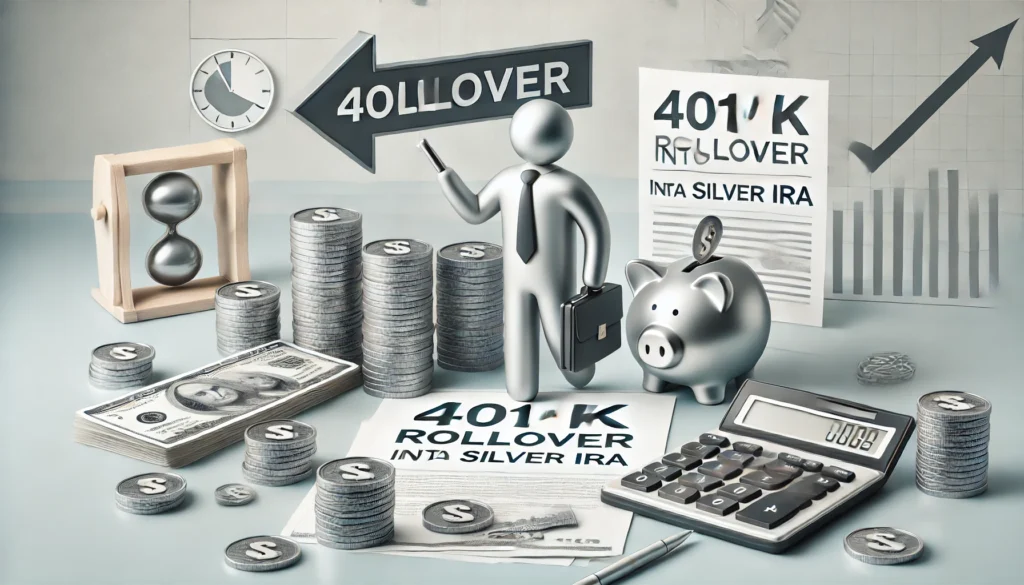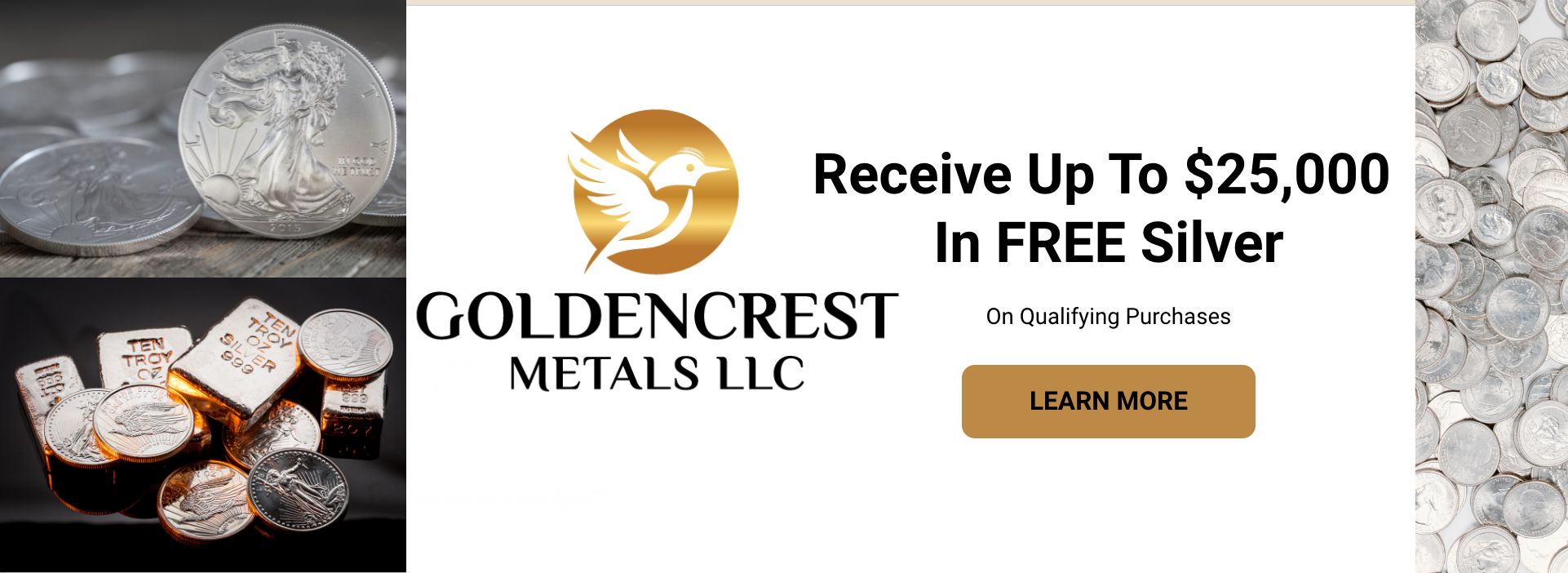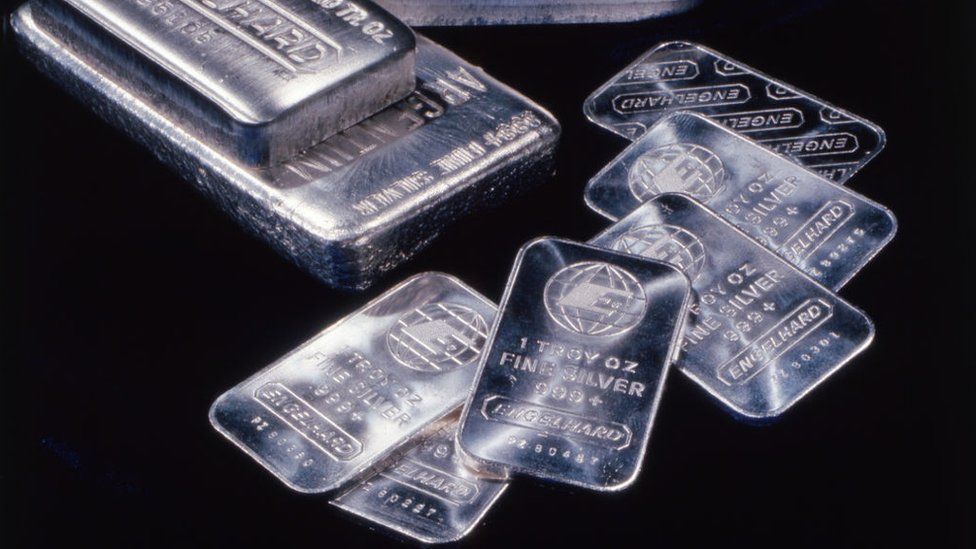Affiliate Disclosure
The owners of this website may be paid to recommend the following companies: Goldco, Augusta Precious Metals, Noble Gold Investments, and Birch Gold Group. The content on this website, including any positive reviews of the mentioned companies, and other reviews, may not be neutral or independent. We do believe in all the companies we recommend as being the most trustworthy in the business.
Understanding the 401K to Silver IRA Rollover
A 401K rollover into a Silver IRA is an increasingly popular strategy for those seeking to diversify their retirement savings beyond traditional stocks and bonds. By shifting funds from a standard 401K into a self-directed IRA backed by silver, investors are looking to secure a portion of their assets with a tangible, inflation-resistant investment. Here’s a comprehensive guide on why and how to make this move for a financially resilient retirement.

What Is a 401K Rollover?
A 401K rollover occurs when funds are transferred from an employer-sponsored retirement account into a new or existing IRA. This transfer allows retirees and workers to maintain tax-deferred status on their savings while gaining more control over their investment options. A Silver IRA, in particular, is a type of self-directed IRA that enables account holders to invest in physical silver or other precious metals.
5 Simple Steps to Convert your 401k to a Silver IRA Video
- Direct Rollover: The funds are transferred directly from the 401K plan to the IRA custodian, helping avoid any taxes or penalties that might otherwise apply.
- Indirect Rollover: In this case, you receive the funds and are responsible for depositing them into the new IRA within 60 days to maintain tax-deferred status. This option involves more risk due to possible taxes and penalties if the timeline isn’t strictly followed.
By choosing a Silver IRA, investors can add a tangible, often more stable asset to their portfolio—a potential safeguard against market volatility and economic instability.
Why Consider Precious Metals in Your IRA?
Silver has long been valued as a hedge against inflation and as a form of “real money” that retains purchasing power over time. When traditional assets like stocks and bonds face fluctuations, precious metals like silver often move in the opposite direction. This characteristic can add an essential layer of diversification to retirement portfolios.
Some reasons investors consider adding silver to their IRAs include:
- Hedge Against Inflation: Silver, like gold, has historically maintained its value during inflationary periods, making it a reliable store of value.
- Market Independence: Silver prices are generally not tied to stock markets, providing a buffer during economic downturns.
- Intrinsic Value: Silver’s industrial and jewelry demand provides a steady market, offering some assurance that it will retain its value.
Get a FREE Gold Guide and up to $25,000 in FREE Silver with Qualifying Purchase!

Benefits of a Silver IRA in Retirement
Adding silver to a retirement account can offer unique advantages, especially for those looking to enhance the stability and diversification of their retirement portfolio.
Hedge Against Inflation and Market Volatility
As inflation rates rise, the purchasing power of paper currency falls, which can devalue traditional savings. Silver and other precious metals tend to retain their value, making them attractive investments during inflationary periods. Because of their counter-cyclical nature, precious metals like silver can perform well when markets decline, which provides a buffer against economic uncertainty.
A few key benefits include:
- Wealth Preservation: Silver helps protect retirement savings from the adverse effects of inflation and currency devaluation.
- Long-Term Stability: Unlike stocks, silver’s value doesn’t fluctuate with corporate performance, offering a more stable investment for the risk-averse.
Tax Advantages of Silver IRAs
A Silver IRA offers the same tax advantages as traditional IRAs, allowing earnings to grow tax-free until they are withdrawn in retirement. Here’s how these tax benefits can make a difference:
- Tax-Deferred Growth: All capital gains within a Silver IRA grow tax-free, compounding over time without immediate tax implications.
- Potential for Lower Tax Rates in Retirement: Many retirees fall into lower tax brackets after they stop working, allowing them to withdraw funds at a reduced tax rate.
These tax benefits are a considerable advantage for investors looking to maximize growth and retain as much of their investment as possible over the long term.
Steps to Roll Over Your 401K to a Silver IRA
Rolling over your 401K to a Silver IRA involves several straightforward steps. Let’s break it down to make the process easier.
Choosing a Self-Directed IRA Custodian
Unlike traditional IRAs, Silver IRAs require a specialized custodian to manage precious metal investments. Finding a reputable self-directed IRA custodian is essential, as they handle the purchase, storage, and compliance associated with your silver investment.
- Research Custodians: Look for custodians with solid reputations, reasonable fees, and transparent policies. Check for any storage or management fees that might apply.
- Select Your Custodian: Once you find a trustworthy custodian, establish your new Silver IRA account with them to initiate the transfer. Here are our top custodians below:
Our Top Trusted Company Picks for 2025
Our recommended Providers are researched and vetted by us and many top consumer organizations. This is the short list of the most consistent companies we could come up with. Request information from them below.
#1: GoldenCrest Metals *** Best Overall***
Our Rating: 10/10
Key Points
✅ A- BBB Rating
✅ $10,000 Minimum Investment
✅ Excellent Customer Reviews
✅ Transparency and Trust is the Main Focus
✅ All Fees Covered for the First year
✅ An Educational and Long-term Approach to Tailored Precious Metals Strategies
✅ $25,000 in FREE Silver for Qualified Accounts!
#2: Birch Gold Group ***Great Client Education ***
Our Rating: 9.9/10
Key Points
✅ Great company commitment to education and communication
✅ Impeccable customer service
✅ Silver, gold, platinum and palladium available
✅ $10,000 Minimum Investment
#3: Noble Gold Investments ***Best for Rollovers***
Our Rating: 9.9/10
Key Points
✅ One of the best no questions asked buyback programs in the industry
✅ Free delivery of your precious metals to your door at any time
✅ Over 20 years of experience in the precious metals industry
✅ Gold, silver, platinum, and palladium available.
✅ Only Sells Bullion, NO Premium or Collectible Metals
✅ Secure, exclusive storage in the
State of Texas
✅ $20,000 Minimum Investment
Call Noble Gold for your FREE Investing Kit!
1-626-684-4908
Completing the Rollover Process Step-by-Step
- Contact Your 401K Provider: Inform your current 401K administrator about your plan to roll over the funds. They’ll guide you on specific paperwork and processing times.
- Initiate the Transfer: Once you open a Silver IRA account, your custodian will assist with the direct rollover, ensuring the funds transfer smoothly without tax penalties.
- Purchase Silver: After the funds are successfully deposited into your new account, the custodian can help you acquire silver or other precious metals. Make sure you know the types of silver coins or bars allowed under IRS regulations.
Silver IRA Investment Options
Once your Silver IRA is set up, you can choose between different types of silver investments.
Physical Silver vs. Silver ETFs
When rolling over to a Silver IRA, you generally have two main investment options: physical silver and silver-backed ETFs.
- Physical Silver: Physical assets include silver coins and bars, which are stored in a secure depository approved by your custodian.
- Silver ETFs: These are exchange-traded funds that track the price of silver. While ETFs offer more liquidity, they do not provide the same level of ownership as physical silver and may not have the same inflation-hedging potential.

Balancing Silver with Other Precious Metals
Many investors in precious metals IRAs opt to diversify their holdings further by including gold, platinum, or palladium. This approach spreads risk across different metals, which may perform differently based on economic factors.
- Gold: Known for its stability, gold is often a primary choice for hedging against inflation.
- Platinum and Palladium: These metals are rarer and can experience greater price fluctuations, which may appeal to more growth-oriented investors.
Risks and Considerations
While a Silver IRA offers multiple benefits, it’s important to understand the associated risks and considerations before making the rollover.
Market Risks and Storage Costs
Silver and other precious metals can experience significant price fluctuations. While silver tends to provide stability in some market conditions, its value can drop sharply under others.
- Volatility: Silver prices can fluctuate widely, which can impact the value of your investment.
- Storage Fees: Since Silver IRAs require physical storage in secure facilities, you’ll likely encounter annual storage fees that can impact overall returns. Ensure you understand all custodial and storage fees before committing.
Regulatory Compliance and Penalties for Early Withdrawal
Silver IRAs, like all IRAs, are bound by IRS regulations. If you withdraw funds before reaching the age of 59½, you may face a 10% early withdrawal penalty in addition to regular income taxes. Make sure you’re aware of all rules governing distributions to avoid any unintended penalties.
- IRS Penalties: Early withdrawals from a Silver IRA are subject to strict penalties. Keep your retirement timeline in mind and be aware of any potential withdrawal penalties.
- Required Minimum Distributions (RMDs): Once you reach 73, you’ll need to begin taking distributions, which might mean selling part of your silver assets or balancing them with other holdings.
Consider your investment goals and risk tolerance. Silver IRAs are ideal for those seeking a hedge against inflation and a more stable retirement option.
Yes, you can roll over a portion of your 401K if you prefer to diversify only part of your retirement funds.
The IRS allows certain types of silver coins and bars for IRA investments, like American Silver Eagles and approved bullion.
Yes, custodial and storage fees are common with Silver IRAs, which can vary depending on the custodian.
Yes, custodial and storage fees are common with Silver IRAs, which can vary depending on the custodian.
Can I roll over part of my 401K into a Silver IRA? Yes, you can roll over a portion of your 401K if you prefer to diversify only part of your retirement funds.
What types of silver can I invest in with a Silver IRA? The IRS allows certain types of silver coins and bars for IRA investments, like American Silver Eagles and approved bullion.
Are there annual fees for Silver IRAs? Yes, custodial and storage fees are common with Silver IRAs, which can vary depending on the custodian.
How does a Silver IRA differ from a Gold IRA?
Both are self-directed IRAs, but they invest in different metals. Each offers unique benefits, such as silver’s industrial demand and gold’s traditional stability.
Silver can be an effective hedge due to its historical resilience during inflationary and market downturn periods.










